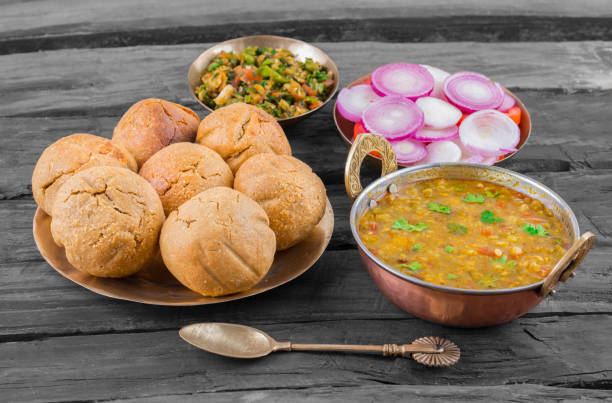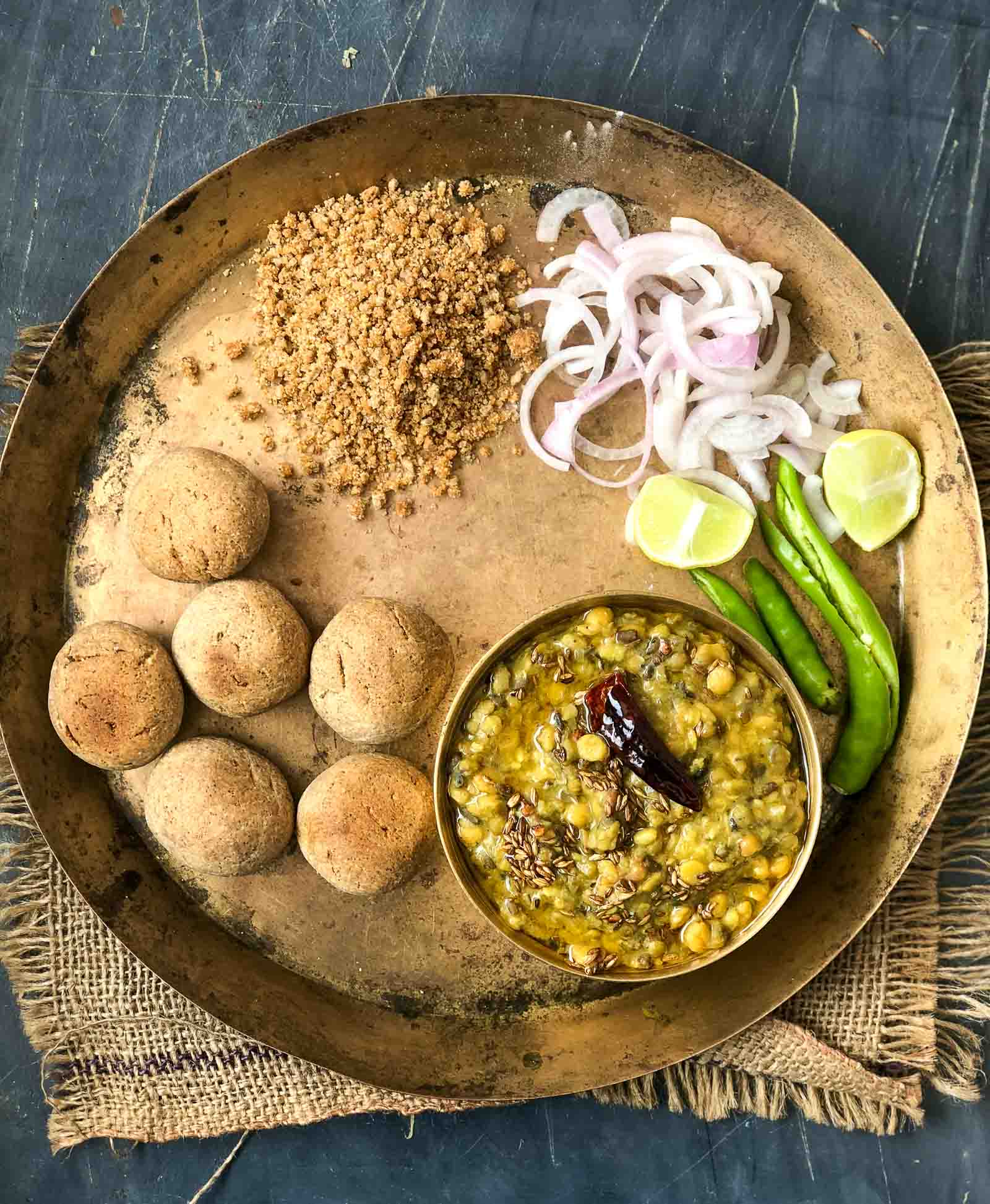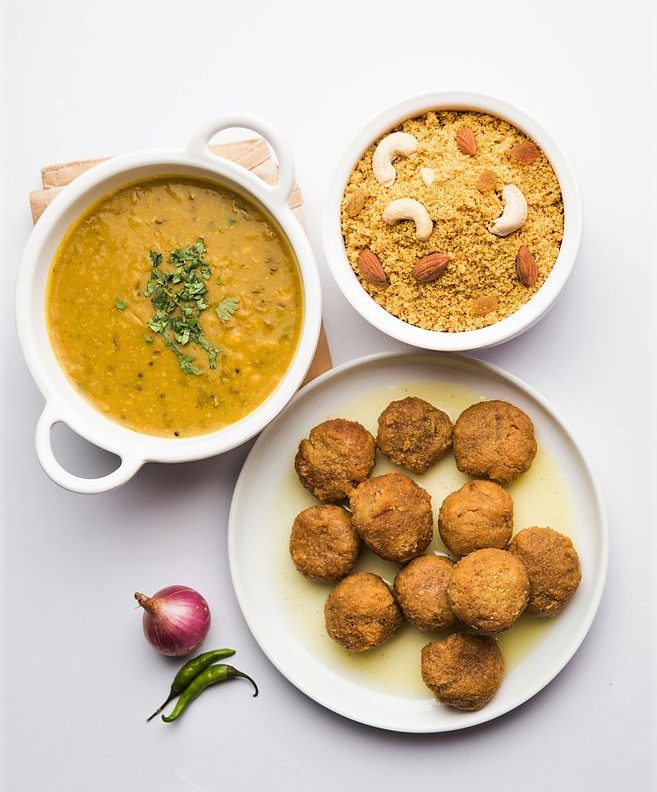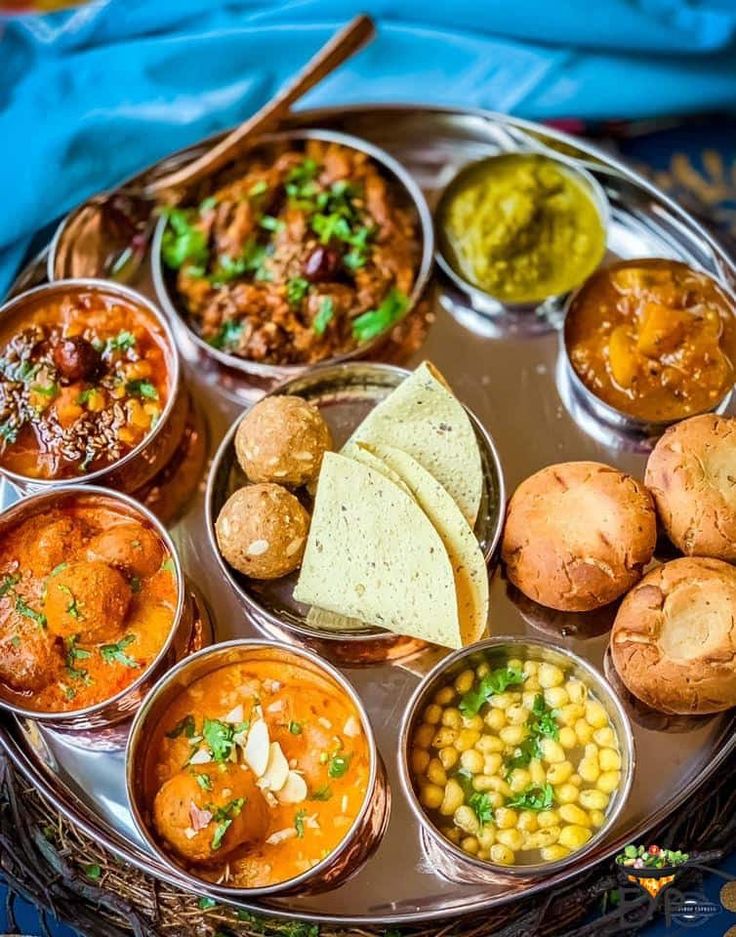Introduction

Indian cuisine, encompassing the entire range of regional delicacies and lesser-known specialties from every corner of the country, is nearly unbeatable. The distinctive spice combinations, extensive preparation time, uncommon ingredients, and an abundance of affection and attention contribute to the exceptional nature of the dishes.
Rajasthani cuisine, in particular, is one that excites our taste buds and leaves us in awe. There is a certain quality about the food that evokes a sense of grandeur and reminds us of the opulence of the past. One of the most well-known and beloved dishes in India is the famous Dal Baati Churma. The perfectly baked balls of dough (baati), the flavorful panchmel dal, and the delightful taste of churma—the combination is flawless. A nutritious and satisfying meal, the three-pronged dish, in fact, has an intriguing history behind it.
Origin of the cuisine:
All of it began with the simple flatbread. Many years ago, when Bappa Rawal was the ruler of the Mewar kingdom in Rajasthan, baati was a significant meal during times of war. Prior to engaging in battle, Rajput warriors would dig deep into the sandy terrain and bury small balls or dough pieces within it. After emerging victorious, they would discover perfectly cooked balls or dough pieces. After cleaning, they would coat the dishes with desi ghee and serve them with either buttermilk or curd.

The dal was delayed. When the Gupta Empire expanded into Mewar, they brought along their love for the panchmel dal. A mixture of five lentils (hence the name, panchmel)—moong dal, chana dal, toor dal, masoor dal, and urad dal—is prepared with aromatics and spices such as cumin, cloves, chili, and more.
The Gupta dynasty elevated the traditional baati-dahi/doodh combination to dal baati, uniting two crucial components of one of India’s most cherished dishes. Now, the flavorless dairy product was transformed into a more flavorful option by incorporating spices and additional nutrients.

One of the most delightful aspects of dal baati churma, the churma, was that it was believed to have been an unintentional creation. From the Guhilot clan of the Mewar region, a cook unintentionally spilled sugarcane juice onto some freshly baked bread.
Naturally, this resulted in the baatis becoming softer and more moist. This came to be the desired state, as the Guhilot women wanted to keep the baatis softer until the men returned home, and so, they began dunking the rather tough dough balls into a mixture of water and jaggery, or sugarcane.

Eventually, as the baati remained moist, it might have started to disintegrate into what we now recognize as churma. As time went on, the locals started adding cardamom or any other preferred spice or sweetener to their recipe.
This delectable blend of sweet, spicy, and bland bread was born in the desert kingdom of Mewar. As the dish gained popularity in Rajasthan, each local dynasty contributed its own unique spin to the traditional combination. And finally, with Akbar’s queen, Rani Jodha Bai, and Dal Baati Churma, they arrived at the Mughal court.
Culinary components

1. Batti: These are round, hard wheat rolls, traditionally ripened in a soil oven or in open flames. Flour is made from wheat flour, ghee, and sometimes yogurt, which are kneaded into a strict stability. The roasts are then cooked until golden brown and usually served with ghee.
2. Dal : A mixture of various pulses, such as toor dal, cooked with spices such as moong dal and gram dal, cumin seeds, mustard seeds, garlic, and green chilies. The lentils are seasoned to taste and are often garnished with fresh coriander.
3. Churma : This sweet component of bats is made by crushing them into thick pieces, which are then mixed with ghee, sugar, or jaggery and sometimes seasoned with cardamom and garnished with nuts. Churma adds a delightful sweetness to balance the savory flavors of dal and baati.
Cultural and regional variations
While the parties are synonymous with Rajasthan, their effect extends to neighboring areas:
Madhya Pradesh: Here, a variation known as “Dal Bafla” is popular. Unlike traditional baati, the baffla is first boiled and then cooked, resulting in a soft texture.

Maharashtra: In the Khandesh and Vidarbha regions, a uniform dish is enjoyed, which is often served with roasted brinjal mash (barta).
Dal Baati in modern times Today, the Dal Baati Churma crosses its humble start. It is a head-on wedding, festival, and special occasion in Rajasthan.
In cities like Udaipur, Jaipur, and Jodhpur, restaurants have raised the dish, which offers different versions, attracting both the local people and tourists. The permanent appeal of the dish lies in its rich history, heartfelt taste, and spirit of tradition.
In contemporary times

In Rajasthani cuisine, a dominant dal Baati Churma remains a popular dish in contemporary times, both enjoyed both as a traditional food and a modern twist on a classic. It remains a favorite during festivals, ceremonies, and special occasions, which shows the rich heritage and tradition of Rajasthan. Contemporary Adaptation and Development includes:
Variation in Baati: Modern adaptation includes stuffed Baati with various fillers, such as potatoes or dried spices, and expansion beyond the traditional ripe wheat ball.
Great food presentation: Dal Baati Churma is now offered in a variety of presentation styles in various types of installations, from street shops to fine-dining restaurants.
Conclusion
The Dal Baati Churma stands as a testament to the prosperous culinary heritage of Rajasthan, which embodies the history, culture, and flexibility of the state. Rising from the dry scenarios of Rajasthan, this dish was designed to meet the nutritional needs of warriors and travelers. The Batty, a hard wheat roll, was designed for a long shelf life, which makes it an ideal partner for a long journey. Coupled with hearty lentils made from a mixture of lentils and sweet skin, food provided a balanced diet required for survival in the rigid desert climate.
References:
https://homegrown.co.in/homegrown-explore/dal-baati-churma-the-origin-of-the-iconic-rajasthani-dish
https://gangwalfoods.com/blogs/news/about-bafla-batti%3Fsrsltid%3DAfmBOopWckm31d47Rwb25EsaELkeZrocYmD5_Woadm3xyYZvXP1c1AwS




